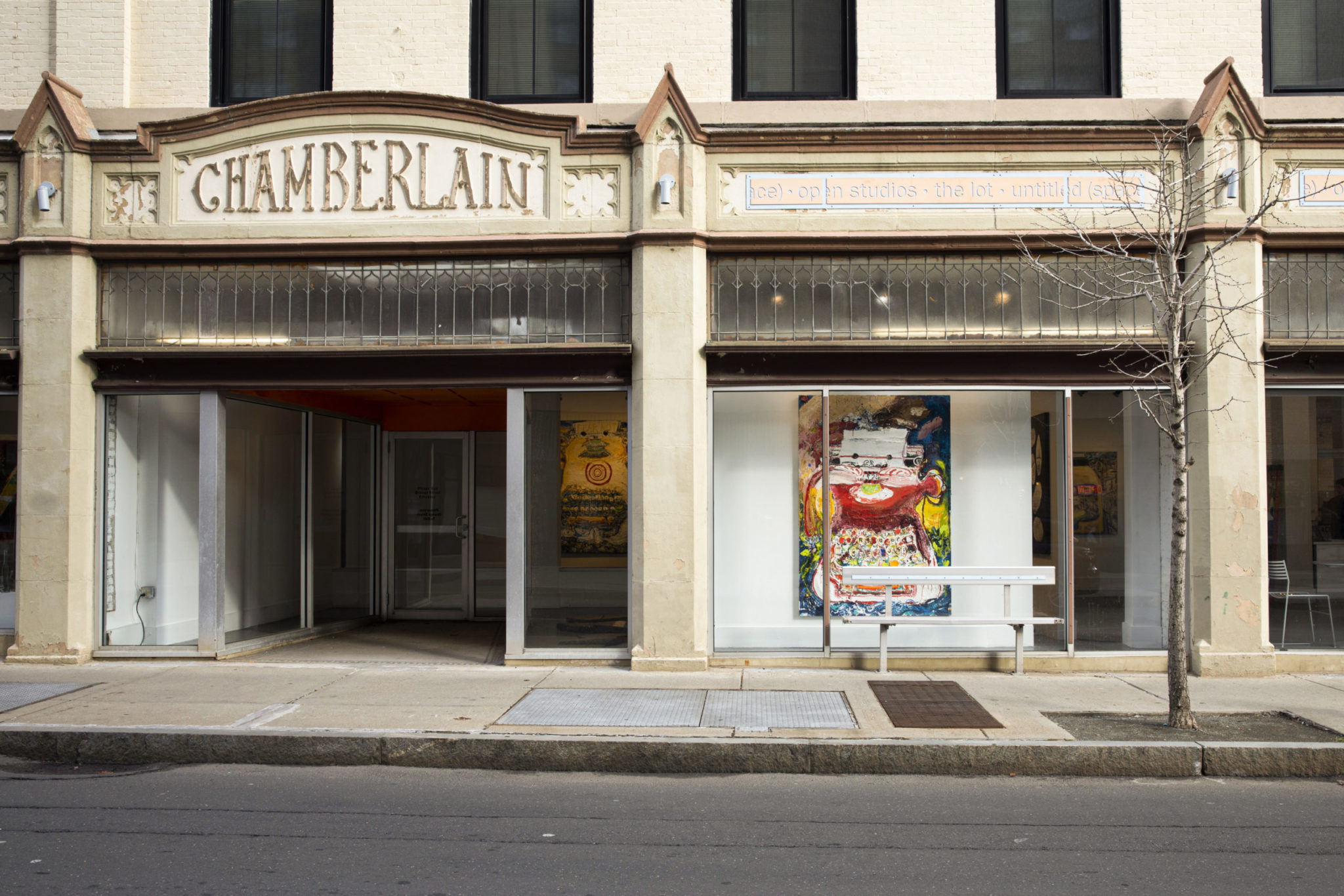Artspace New Haven considers space and time
Artspace New Haven’s new exhibition titled “Everywhere and Here” features works inspired by items in the Yale Peabody Museum of Natural History.

Courtesy of Artspace New Haven
Artspace New Haven’s most recent exhibition, “Everywhere and Here,” features works inspired by items in the Yale Peabody Museum of Natural History.
The exhibition, which will run through Nov. 20, shows work by artists Martha Friedman ’03, Anina Major, Brittany Nelson, Cauleen Smith and Tuan Andrew Nguyen, and was curated by Lisa Dent. Their artworks are displayed beside the Peabody collection’s masks, fabrics, household goods and meteorites that inspired them. Since the Peabody will remain closed for renovation until 2024, the exhibition allows the public to interact with some of its items, which hail from places all across the world and even outer space.
“There are different ways of approaching being asked — or given the opportunity — to sift through a collection of artifacts at a place like the Peabody,” Friedman said. “And it’s a very complicated thing to do. Everyone did it a little differently.”
The exhibition opened on Sept. 17, nearly three years after Artspace founder Helen Kauder, former Artspace curator Sarah Fritchey and Peabody Associate Director of Marketing and Communications Christopher Renton first met to discuss a collaboration between the institutions. Initially, said Renton, the project was seen as an opportunity for the Peabody to remain present and visible in the community during its renovation and gallery closure.
Due to the pandemic, the artists were forced to choose their objects and conduct research remotely, Renton said. They had access to the two million objects in the Peabody’s collection that are digitally catalogued and accessible on the Peabody’s website. Peabody collection managers and the museum registrar aided artists in this process and provided additional background information on objects.
Though the Peabody has never collaborated with Artspace before, an important part of its mission is to use its collection to support the arts.
“The Peabody has a long legacy of connecting art and science,” Renton said. “From the world-famous Zallinger murals to more recent work with [American artist] James Prosek, we continue to see tremendous value in facilitating artists’ engagement with our collections and research.”
Friedman, who chose to work with swathes of linen wrappings taken from mummies, said that it is a delicate matter to make art with ancient objects like those in the Peabody’s collection. As museological practices have changed over time, objects like the linens have been treated with varying degrees of respect and disrespect.
For example, newly-discovered mummies were often unwrapped haphazardly as tomb robbers searched for the amulets within, Friedman said. Pre-Raphaelite painters even made paint out of the ground up remains of mummies, a pigment called “mummy brown.”
The linen wrappings — which raiders once commonly tossed aside — fascinated Friedman. The weavings are incredibly intricate, as are the wrapping patterns used to encase the embalmed bodies in the fabrics, she said. In fact, Friedman said these wrappings are what made mummies sacred in the minds of ancient Egyptians.
Friedman’s sculptures consist of glass figures wrapped in swaths of rubber, a material she often incorporates into her practice. One figure stands beside a jumbled pile of rubber wrappings, which are meant to resemble linens tossed aside in search for other treasure.
Two other artists chose to engage with meteorites in the Peabody’s collection, rather than objects so heavily associated with human history.
Cauleen Smith’s piece, for example, takes inspiration from the Allende meteorite, which, according to the statement accompanying the installation, is the largest carbonaceous chondrite ever discovered on Earth. The statement further dictates that before the meteorite entered earth’s atmosphere, it was around the size of an automobile, but it ultimately shattered into thousands of pieces. Smith’s work features a fragment of this meteorite.
For Friedman, working with meteorites “jumps over the problem of cultural authorship” associated with human-made objects that have been removed from their place of origin.
“When I saw the meteorites, I was like ‘meteorites! That’s smart!’” Friedman said.
“Meteorites belong to no terrestrial nation, and no earth peoples. The people belong to the meteorite,” Smith contemplated in her statement, noting this same lack of “ownership.”
In working with objects from such distant pasts, both Friedman and Smith have also considered the future.
“When one thinks about the journey charted by the Allende meteorite, one must consider both time and space; distance and duration,” Smith wrote in an email to the News. “The Allende meteorite is a visitor from our cosmic past and perhaps holds keys within its molecular structure to possible futures.”
Friedman said she has recently been considering an essay by German artist and writer Hito Steyerl that wonders whether people are making art for future aliens. As she was incorporating bits of gold into the busts of one of her glass sculptures, she was struck by the fragility and ephemerality of her work. She started imagining aliens discovering her work years into the future and began to wonder how they might interpret her art.
“There are these threads — pun intended — that run through the work and have to do with what’s lost over time,” Friedman said. “How do we engage with that which was preserved and that which was lost? And what is art’s role in mediating those spaces?”
Artspace New Haven is hosting its annual citywide showcase over two weekends through Oct. 15-24









